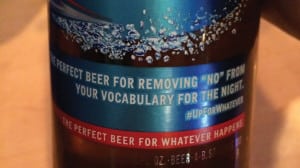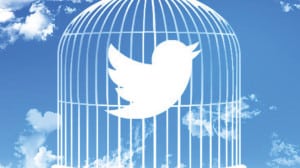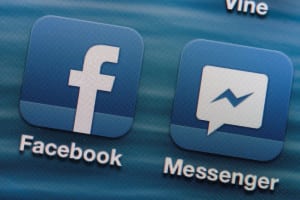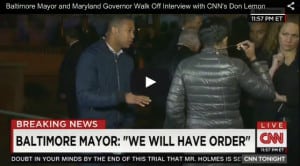 Jay-Z Put on His PR hat and took to Twitter to defend his Tidal brand against criticism that it is for pampered artists. The service rolled out just a few weeks ago and the music mogul already is getting grief. It comes with the territory, we suppose. But Jay-Z knows the drill all too well: When your brand is getting hammered, have the boss meet the critics head-on and try and take hold of the narrative.
Jay-Z Put on His PR hat and took to Twitter to defend his Tidal brand against criticism that it is for pampered artists. The service rolled out just a few weeks ago and the music mogul already is getting grief. It comes with the territory, we suppose. But Jay-Z knows the drill all too well: When your brand is getting hammered, have the boss meet the critics head-on and try and take hold of the narrative.- Mobile as Traffic Engine. At the start of 2015, 39 of the top 50 digital news websites have more traffic visiting them and their associated apps from mobile devices than from desktop computers, per Pew Research Center’s analysis of comScore data. At the same time, though, desktop visitors to these sites tend to stay longer per visit than mobile visitors do.
- Edelman’s Global Women’s Executive Network (GWEN) announced a partnership with the International Women’s Forum (IWF), a global organization focused on the advancement of women. Edelman will partner with IWF at its two global conferences, including the IWF’s World Cornerstone Conference in Johannesburg, May 20-22, and again for its World Leadership Conference in Boston, October 28-30.
 The new tagline for the Bud Light Up for Whatever campaign has been nixed. The brand reportedly came under fire last week because of an ad slogan printed on its bottles that some believe promotes rape culture. “The perfect beer for removing ‘no’ from your vocabulary for the night,” the label reads. (The word no has been part of rape prevention education for years.) Bud Light’s VP Alexander Lambrecht released a statement saying that the message “missed the mark....We would never condone disrespectful or irresponsible behavior.” The case marks yet another excuse for PR and ad execs to work together hand-in-glove so companies don’t come off as culturally tone deaf.
The new tagline for the Bud Light Up for Whatever campaign has been nixed. The brand reportedly came under fire last week because of an ad slogan printed on its bottles that some believe promotes rape culture. “The perfect beer for removing ‘no’ from your vocabulary for the night,” the label reads. (The word no has been part of rape prevention education for years.) Bud Light’s VP Alexander Lambrecht released a statement saying that the message “missed the mark....We would never condone disrespectful or irresponsible behavior.” The case marks yet another excuse for PR and ad execs to work together hand-in-glove so companies don’t come off as culturally tone deaf. The New York Mets may have a new pitch when it comes to dealing with social media trolls: Blow them off. That was the advice the team gave top pitching prospect Noah Syndergaard after he was scratched from starting a game last week and incurred the wrath of fans on Twitter. When he engaged the critics, and received a second wave of criticism for responding, Syndergaard wrote: “I’m allowed to stick up for myself aren’t I?”Well, no, according to the Mets. “Generally speaking, Twitter is more of a trap than a means of positive communication for athletes and executives,” Mets G.M. Sandy Alderson told MLB.com. “So I caution him against it. That’s something the organization addresses immediately.” It’s a social media strategy that brands of all stripes would be wise to bat around.
The New York Mets may have a new pitch when it comes to dealing with social media trolls: Blow them off. That was the advice the team gave top pitching prospect Noah Syndergaard after he was scratched from starting a game last week and incurred the wrath of fans on Twitter. When he engaged the critics, and received a second wave of criticism for responding, Syndergaard wrote: “I’m allowed to stick up for myself aren’t I?”Well, no, according to the Mets. “Generally speaking, Twitter is more of a trap than a means of positive communication for athletes and executives,” Mets G.M. Sandy Alderson told MLB.com. “So I caution him against it. That’s something the organization addresses immediately.” It’s a social media strategy that brands of all stripes would be wise to bat around. Another day, another Facebook upgrade. This one for its Messenger app on iOS and Android: video calling. And this means no more Facebooking while you’re not looking your best. Now, Messenger users can have a face-to-face chat. For social networks and brand marketers alike, online video is shaping up as the main revenue engine for the future. It may also provide a revenue boost to the clothing, hair, cosmetics and shaving industries.
Another day, another Facebook upgrade. This one for its Messenger app on iOS and Android: video calling. And this means no more Facebooking while you’re not looking your best. Now, Messenger users can have a face-to-face chat. For social networks and brand marketers alike, online video is shaping up as the main revenue engine for the future. It may also provide a revenue boost to the clothing, hair, cosmetics and shaving industries. Baltimore Mayor Stephanie Rawlings-Blake and Maryland Gov. Larry Hogan no doubt are under intense pressure because of the Baltimore riots. Nevertheless, a cardinal rule of PR is to keep your cool regardless of how hairy things may be, and in that respect Rawlings-Balke and Hogan may need some schooling after their joint appearance on CNN. The mayor and the governor were questioned by CNN’s Don Lemon about the state’s response to the rioting and looting following the death of 25-year-old Freddie Gray, who died while in police custody. Both the governor and mayor responded that officials initially had the situation under control. But Lemon persisted, asking why a state of emergency wasn’t declared until two days after the riots started. That was enough for Rawlings-Blake and Hogan, who walked away from the interview. The move does no favors for the political duo, who need all the support they can muster. And, from a PR standpoint, alienating the media seldom provides any positive return.
Baltimore Mayor Stephanie Rawlings-Blake and Maryland Gov. Larry Hogan no doubt are under intense pressure because of the Baltimore riots. Nevertheless, a cardinal rule of PR is to keep your cool regardless of how hairy things may be, and in that respect Rawlings-Balke and Hogan may need some schooling after their joint appearance on CNN. The mayor and the governor were questioned by CNN’s Don Lemon about the state’s response to the rioting and looting following the death of 25-year-old Freddie Gray, who died while in police custody. Both the governor and mayor responded that officials initially had the situation under control. But Lemon persisted, asking why a state of emergency wasn’t declared until two days after the riots started. That was enough for Rawlings-Blake and Hogan, who walked away from the interview. The move does no favors for the political duo, who need all the support they can muster. And, from a PR standpoint, alienating the media seldom provides any positive return.
This article originally appeared in the May 4, 2015 issue of PR News. Read more subscriber-only content by becoming a PR News subscriber today.
